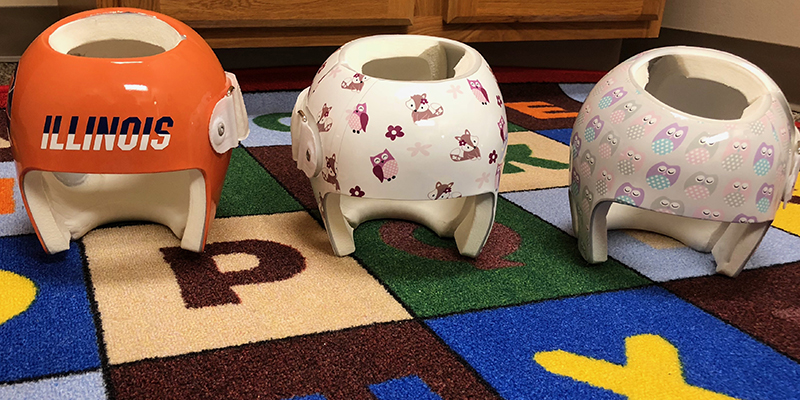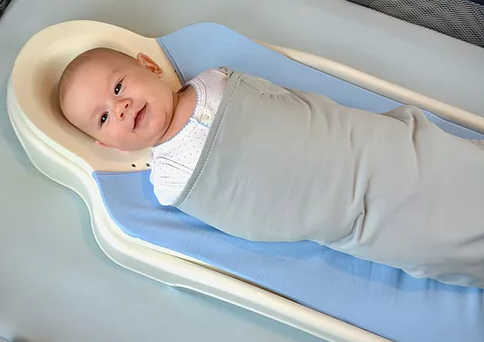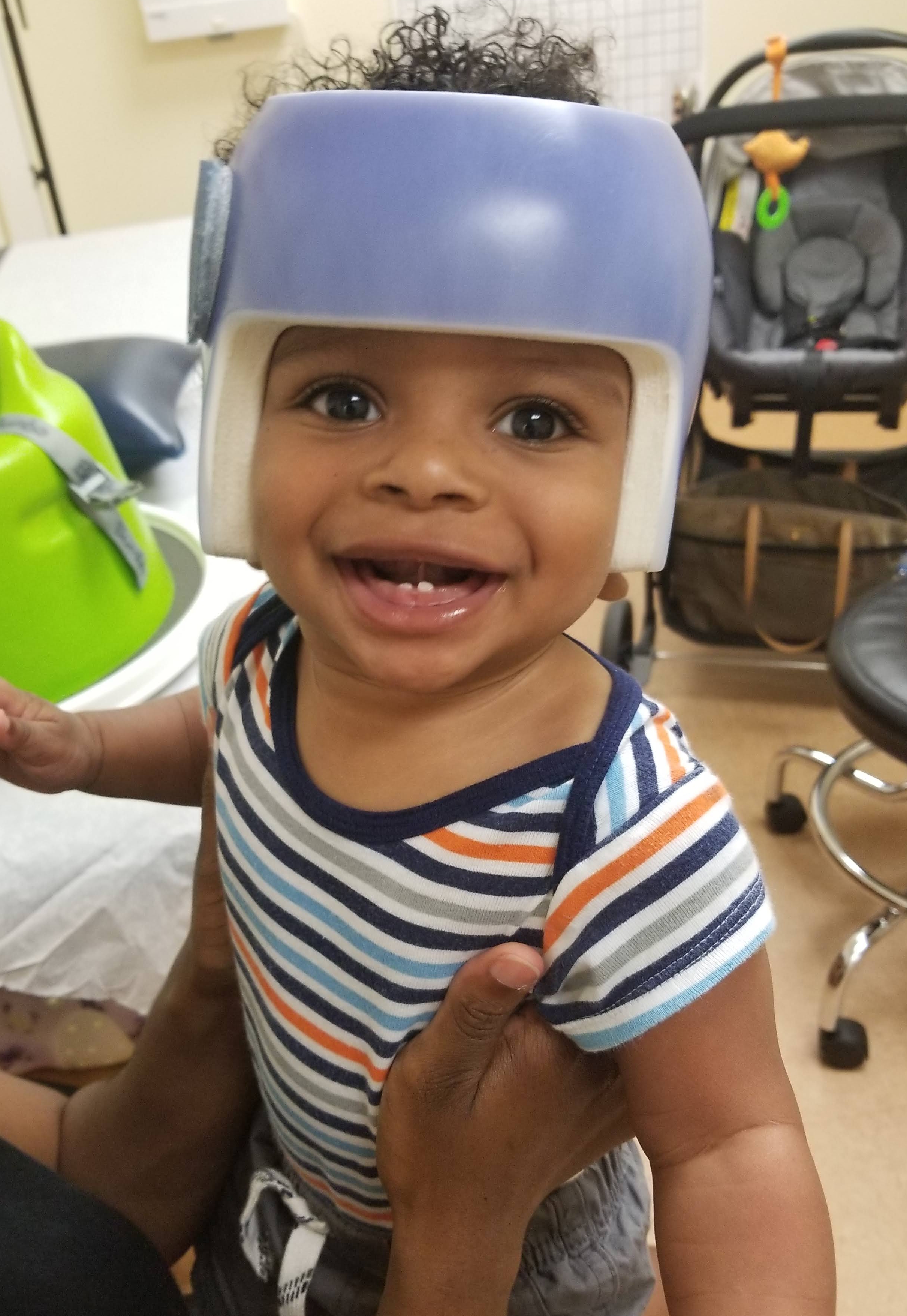When is "Too Young" for a Baby to Helmet for Plagiocephaly?
Posted on
Many babies have a flattened area of the back or side of their head. This flattening or cranial asymmetry is called plagiocephaly or “flat head syndrome.” It can be caused when the baby’s head frequently rests in the same position on everyday surfaces such as a mattress or car seat, or it can even happen in the womb. It is very common, occurring in about half of all infants.
If you have noticed a flat spot on your baby’s head (usually on the side or back of the head), there are several ways to address the issue, but it’s important to choose the option that is best for your child based on a number of factors, including how old your baby is.
A plagiocephaly helmet or cranial remolding orthosis (CRO) like the Boston Band can be extremely effective at correcting plagiocephaly, but it is not appropriate for infants under 3 months. If your baby is younger than 3 months and is showing signs of plagiocephaly, there are several things you can try. The good news is, you can start right from birth to address the issue!
plagiocephaly, but it is not appropriate for infants under 3 months. If your baby is younger than 3 months and is showing signs of plagiocephaly, there are several things you can try. The good news is, you can start right from birth to address the issue!
Repositioning
Repositioning—placing your child in a position that may improve the shape of the skull and stretch the neck muscles—is important in preventing flat head syndrome. How you position your child - if there is a flattening of the back right of the head, try positioning your infant so that they are looking left, and vice versa.
Tummy Time
When possible, prevent pressure on the back of the head by avoiding prolonged time in a car seat, baby swing, or other types of carriers. Use tummy time, when the child is positioned on his or her belly, to strengthen the neck muscles, improve range of motion and motor development, and avoid flattening of the skull. During tummy time, change where you place toys and other items of interest frequently, by rotating from side to side or by alternating direction in the crib.
Sleep Cradling
Sleep cradling, where the baby’s head is gently held by a specially designed sleep surface, is another great option for very young babies. Unlike other solutions such as positioning pillows, the Perfect Noggin is a contoured sleep surface that fits safely inside a crib or bassinet. The anatomically correct head recess comfortably cradles the back of the infant's head, promoting natural head shape and symmetry as the infant grows. The Perfect Noggin is recommended for infants under 4 months, and works best when started in the first 2 months of life. It can only be used for babies who can’t roll over from front to back yet.
babies. Unlike other solutions such as positioning pillows, the Perfect Noggin is a contoured sleep surface that fits safely inside a crib or bassinet. The anatomically correct head recess comfortably cradles the back of the infant's head, promoting natural head shape and symmetry as the infant grows. The Perfect Noggin is recommended for infants under 4 months, and works best when started in the first 2 months of life. It can only be used for babies who can’t roll over from front to back yet.
Cranial Helmet
If you have tried repositioning, tummy time, and sleep cradling and there is still a significant flattened area on you baby’s head, you may want to consider a cranial helmet like the Boston Band. An orthotic helmet acts as a mold for the infant’s head, restricting further asymmetric growth and guiding the flattened areas to grow into the empty space of the helmet in a normal, rounded fashion. Cranial helmets are generally only recommended in babies who are at least 3 months old.
Do you have a question about flat head syndrome? Contact us to ask a question or join the Boston Band & Plagiocephaly Support Group on Facebook to receive professional advice from an expert.

